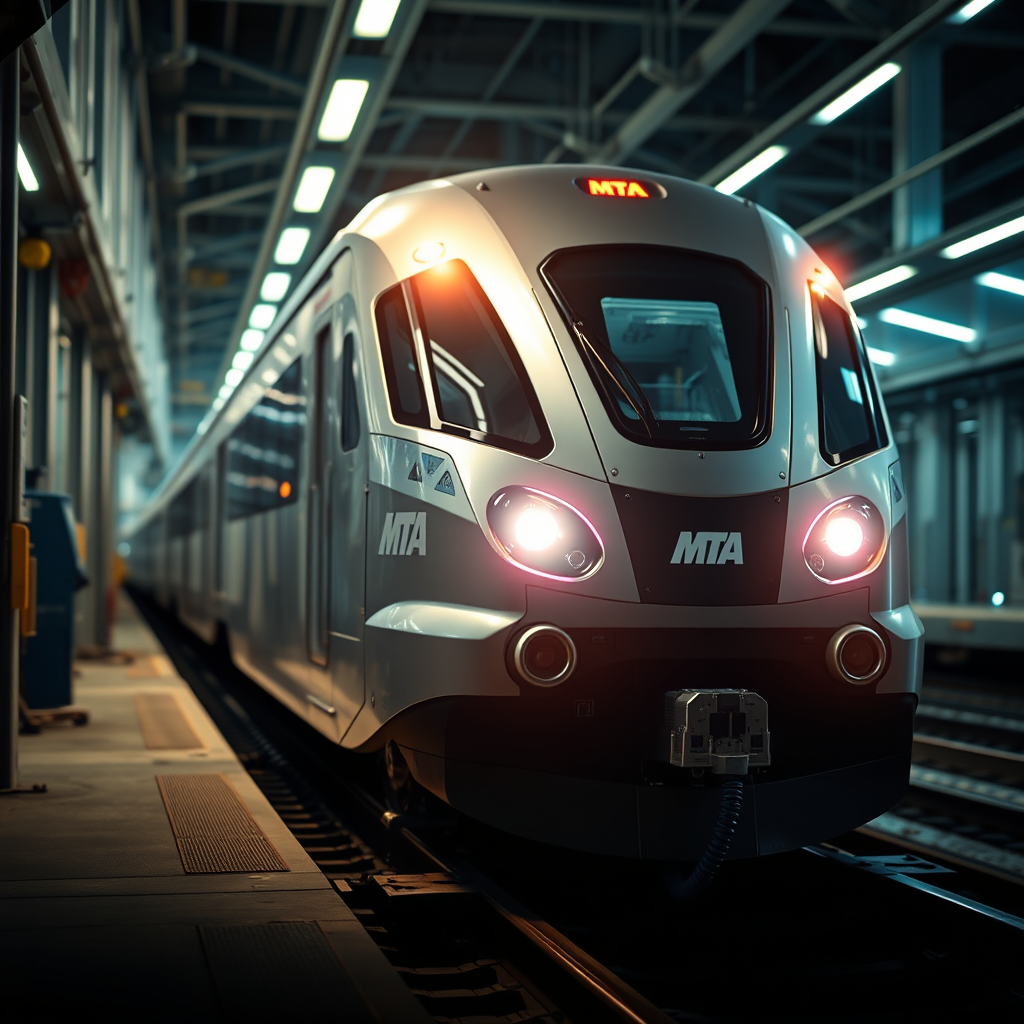MTA’s AI Railcar Inspection: Safety, Efficiency, & SMART Tech

Autonomous Railcar Inspection: Enhancing Efficiency and Safety in the MTA
The Metropolitan Transportation Authority (MTA) in New York City is poised to revolutionize its railcar maintenance procedures through the implementation of an autonomous inspection system. This initiative, fueled by a $2 million grant from the Department of Transportation’s (DoT) Strengthening Mobility and Revolutionizing Transportation (SMART) program, represents a significant leap forward in leveraging technology to improve both the efficiency and safety of the Metro-North Railroad. This article will delve into the details of this pilot program, exploring its technological underpinnings, operational implications, and potential long-term impact on railway maintenance practices nationwide. The introduction of autonomous inspection technologies has the potential to significantly alter the landscape of railway maintenance, offering considerable advantages in terms of cost-effectiveness, improved safety, and enhanced operational efficiency. The following sections will examine these aspects in detail, offering a comprehensive analysis of this innovative approach to railcar maintenance. The overall success of this pilot program could influence the adoption of similar technologies across the broader railway sector, setting a new standard for proactive and data-driven maintenance strategies.
The SMART Grant and Technological Advancement
The $2 million SMART grant (Strengthening Mobility and Revolutionizing Transportation) underscores the federal government’s commitment to supporting innovative transportation technologies. This funding allows the MTA to implement a cutting-edge autonomous inspection system for its rolling stock on the Metro-North Railroad. This system will augment, not replace, existing manual inspections, providing a more comprehensive and proactive approach to identifying and addressing potential defects. The integration of advanced sensor technology, such as cameras, LiDAR (Light Detection and Ranging), and potentially ultrasonic sensors, enables the autonomous system to identify a wide array of potential issues, ranging from minor cosmetic damage to more critical structural or mechanical flaws. The data collected by this autonomous system will provide valuable insights into the condition of the rolling stock, allowing for more predictive maintenance scheduling and reducing the likelihood of unexpected failures.
Improving Efficiency and Enhancing Safety
The primary goals of this initiative are to significantly enhance the efficiency and safety of Metro-North’s railcar maintenance operations. Currently, manual inspections are time-consuming and labor-intensive, potentially leading to inconsistencies in detection and delayed identification of critical issues. An autonomous system addresses these challenges by automating the inspection process, allowing for faster and more thorough assessments of each railcar. This speed and thoroughness translates to earlier detection of defects, enabling more timely repairs and preventing the escalation of minor issues into major safety concerns. The system’s data-driven approach will also contribute to improved risk assessment and management. By identifying patterns and trends in defect occurrences, the MTA can proactively address potential systemic problems before they lead to widespread failures or safety incidents. This transition towards proactive maintenance is expected to reduce operational disruptions and improve the overall reliability of the Metro-North service.
Compliance with FRA Regulations and Proactive Maintenance
The implementation of this autonomous inspection system will greatly assist the MTA in meeting the rigorous safety standards mandated by the Federal Railroad Administration (FRA). By automating a crucial aspect of FRA compliance, the system not only ensures adherence to regulations but also empowers the MTA to move beyond mere compliance towards a more proactive approach to rolling stock maintenance. The detailed data collected by the autonomous system enhances the ability to track, analyze, and address potential safety concerns in real time. This improved monitoring and data-driven analysis will potentially reduce the number of incidents resulting from equipment failure. The system’s effectiveness in identifying potential problems early on will contribute to a significant reduction in unplanned downtime, and a considerable cost savings in the long run.
Conclusion: A Paradigm Shift in Railcar Maintenance
The MTA’s adoption of an autonomous railcar inspection system marks a significant paradigm shift in railway maintenance practices. This pilot program, supported by the DoT’s SMART grant, demonstrates a commitment to leveraging cutting-edge technology to improve efficiency, enhance safety, and ensure compliance with FRA regulations. The success of this initiative has broad implications for the entire railway industry, potentially transforming how rolling stock maintenance is approached nationwide. The ability to conduct more frequent and thorough inspections, coupled with the power of data-driven analysis, promises to usher in an era of proactive maintenance. This ultimately translates into increased safety, improved service reliability, reduced operational costs, and optimized resource allocation within the MTA and beyond. By proactively addressing potential issues before they escalate, this approach not only minimizes safety risks but also optimizes the lifecycle management of railcars, leading to long-term cost savings and enhanced operational efficiency. The potential for broader adoption of this technology across the railway sector is significant, presenting a transformative opportunity to enhance safety, reliability, and operational efficiency within the industry as a whole. This initiative serves as a shining example of how technological advancements can substantially improve railway infrastructure management and provide safer, more reliable services to the public.





